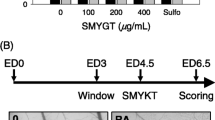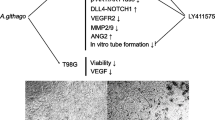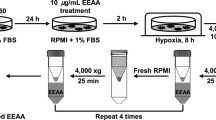Abstract
Cotton, a staple fiber that grows around the seeds of the cotton plants (Gossypium), is produced throughout the world, and its by products, such as cotton fibers, cotton-seed oil, and cottonseed proteins, have a variety of applications. Cotton-seed contains gossypol, a natural phenol compound. (±)-Gossypol is a yellowish polyphenol that is derived from different parts of the cotton plant and contains potent anticancer properties. Tumor growth and metastasis are mainly related to angiogenesis; therefore, anti-angiogenic therapy targets the new blood vessels that provide oxygen and nutrients to actively proliferating tumor cells. The aim of the present study was to evaluate the anti-angiogenic potential of (±)-gossypol in vitro. (±)-Gossypol has anti-proliferative effects on cancer cell lines; however, its anti-angiogenic effects on normal cells have not been studied. Anti-proliferative activities of gossypol assessed using 3-(4,5-dimethylthiazol-2-yl)-2,5-diphenyltetrazolium bromide (MTT) assay, anti-angiogenic activities using tube formation assay, and cell migration inhibition capability using a wound-healing assay on human umbilical vein endothelial cells (HUVECs) were revealed. (±)-Gossypol displayed the following potent anti-angiogenic activities in vitro: it inhibited the cell viability of HUVECs, it inhibited the migration of HUVECs, and disrupted endothelial tube formation in a dose-dependent manner. In addition, the anti-angiogenic effects of (±)-gossypol were investigated in ovo in a model using a chick chorioallantoic membrane (CAM). Decreases in capillary density were assessed and scored. (±)-Gossypol showed dose-dependent anti-angiogenic effects on CAM. These findings suggest that (±)-gossypol can be used as a new anti-angiogenic agent.








Similar content being viewed by others
References
Altun A, Kaya Temiz T, Balcı E, Akın Polat Z, Turan M (2013) Effects of tyrosine kinase inhibitor E7080 and eNOS inhibitor L-NIO on colorectal cancer alone and in combination. Chin J Cancer Res 25:572–584
Benvenuto M, Mattera R, Masuelli L, Taffera G, Andracchio O, Tresoldi I, Lido P, Giganti MG, Godos J, Modesti A, Bei R (2017) (±)-Gossypol induces apoptosis and autophagy in head and neck carcinoma cell lines and inhibits the growth of transplanted salivary gland cancer cells in BALB/c mice. Int J Food Sci Nutr 68:298–312
Bostancıoğlu RB, Kürkçüoğlu M, Başer KHC, Koparal AT (2012) Assessment of anti-angiogenic and anti-tumoral potentials of Origanum onites L. essential oil. Food Chem Toxicol 50:2002–2008
Bushunow P, Reidenberg MM, Wasenko J, Winfield J, Lorenzo B, Lemke S, Himpler B, Corona R, Coyle T (1999) Gossypol treatment in recurrent adult malignant gliomas. J Neurooncol 43:79–86
Chang CJG, Ghosh PK, Hu YF, Brueggmeier RW, Lin YC (1993) Antiproliferative and antimetastatic effect of gossypol on Dunning prostatic cell-bearing Copenhagen rats. Res Commun Chem Pathol Pharmacol 76:293–312
Firsching A, Nickel P, Mora P, Allolio B (1995) Antiproliferative and angiostatic activity of suramin analogues. Cancer Res 55:4957–4961
Flack MR, Pyle RG, Mullen NM, Lorenzo B, Wu YW, Knazek RA, Nisula BC, Reidenberg MM (1993) Oral gossypol in the treatment of metastastatic adrenal cancer. J Clin Endocrinol Metab 76:1019–1024
Friis T, Engel AM, Bendiksen CD, Larsen LS, Houen G (2013) Influence of levamisole and other angiogenesis inhibitors on angiogenesis and endothelial cell morphology in vitro. Cancers (Basel) 5:762–785
Gadelha ICN, Lima MA, Melo MM, Soto-Blanco BI (2016) Gossypol promotes the degeneration of chicken ovarian follicles in vitro. Braz J Poultry Sci 18:505–510
Garrido T, Riese HH, Aracil M, Pérez-Aranda A (1995) Endothelial cell differentiation intocapillary-like structures in response to tumour cell conditioned medium: a modified chemotaxis chamber assay. Br J Cancer 71:770–775
Jaroszewski JW, Kaplan O, Cohen JS (1990) Action of gossypol and rhodamine 123 on wild type and multidrug-resistant MCF-7 human breast cancer cells: 31P nuclear magnetic resonance and toxicity studies. Cancer Res 50:6936–6943
Jarzabek MA, Amberger-Murphy V, Callanan JJ, Gao C, Zagozdzon AM, Shiels L, Wang J, Ligon KL, Rich BE, Dicker P, Gallagher WM, Prehn JH, Byrne AT (2014) Interrogation of gossypol therapy in glioblastoma implementing cell line and patient-derived tumour models. Br J Cancer 111:2275–2286
Jiang J, Kulp S, Sugimoto Y, Liu SL, Lin YC (2000) The effects of gossypol on the invasiveness of MAT-LyLu cells from the metastasized lungs of MAT-LyLu-bearing Copenhagen rats. Anticancer Res 20:4591–4598
Jiang J, Sugimoto Y, Liu S, Chang HL, Park KY, Kulp SK, Lin YC (2004) The inhibitory effects of gossypol on human prostate cancer cells-PC3 are associated with transforming growth factor beta1 (TGF,1) signal transduction pathway. Anticancer Res 24:91–100
Jiang J, Slivova V, Jedinak A, Sliva D (2012) Gossypol inhibits growth, invasiveness, and angiogenesis in human prostate cancer cells by modulating NF-κB/AP-1 dependent- and independent-signaling. Clin Exp Metastasis 29:165–178
Keshmiri-Neghab H, Goliaei B (2014) Therapeutic potential of gossypol: an overview. Pharm Biol 52:124–128
Khoo CP, Micklem K, Watt SM (2011) A comparison of methods for quantifying angiogenesis in the Matrigel assay in vitro. Tissue Eng Part C Methods 17:895–906
Kolmakova A, Rajesh M, Zang D, Pili R, Chatterjee S (2009) VEGF recruits lactosylceramide to induce endothelial cell adhesion molecule expression and angiogenesis in vitro and in vivo. Glycoconj J 26:547–558
Lin QR, Li CG, Zha QB, Xu LH, Pan H, Zhao GX, He XH (2016) Gossypol induces pyroptosis in mouse macrophages via a non-canonical inflammasome pathway. Toxicol Appl Pharmacol 292:56–64
Liu SL, Kulp SK, Sugimoto Y, Jiang J, Chang H-L, Dowd MK, Wan P, Lin YC (2002) The (-)-enantiomer of gossypol possesses higher anticancer potency than racemic gossypol in human breast cancer. Anticancer Res 22:33–38
Minamikawa-Tachino R, Ogura K, Gotoh T (2013) Mesh-loosening quantification of inhibition of angiogenic tube formation through image analysis. Assay Drug Dev Technol 11:25–34
Moon DO, Choi YH, Moon SK, Kim WJ, Kim GY (2011) Gossypol decreases tumor necrosis factor-α-induced intercellular adhesion molecule-1 expression via suppression of NF-κB activity. Food Chem Toxicol 49:999–1005
Park EH, Park JY, Yoo HS, Yoo JE, Lee HL (2016) Assessment of the anti-metastatic properties of sanguiin H-6 in HUVECs and MDA-MB-231 human breast cancer cells. Bioorg Med Chem Lett 26:3291–3294
Prigozhina NL, Heisel AJ, Seldeen JR, Cosford ND, Price JH (2013) Amphiphilic suramin dissolves Matrigel, causing an ‘inhibition’ artefact within in vitro angiogenesis assays. Int J Exp Pathol 94:412–417
Rao PN, Wand YC, Lotzova E, Khan AA, Rao SP, Stephans LC (1985) Antitumor effects of gossypol on murine tumors. Cancer Chemother Pharmacol 15:20–25
Rosselli S, Bruno M, Raimondo FM, Spadaro V, Varol M, Koparal AT, Maggio A (2012) Cytotoxic effect of eudesmanolides isolated from flowers of Tanacetum vulgare ssp. siculum. Molecules 17:8186–8195
Shen S, Wu Y, Li K, Wang Y, Wu J, Zeng Y, Wu D (2018) Versatile hyaluronic acid modified AQ4N-Cu (II)-gossypol infinite coordination polymer nanoparticles: multiple tumor targeting, highly efficient synergistic chemotherapy, and real-time self-monitoring. Biomaterials 154:197–212
Torre LA, Bray F, Siegel RL, Ferlay J, Lortet-Tieulent J, Jemal A (2015) Global cancer statistics. CA Cancer J Clin 65:87–108
Turco E, Vizzuso C, Franceschini S, Ragazzi A, Stefanini FM (2007) The in vitro effect of gossypol and its interaction with salts on conidial germination and viability of Fusarium oxysporum sp. vasinfectum isolates. J Appl Microbiol 103:2370–2381
Tuszynski GP, Cossu G (1984) Differential cytotoxic effect of gossypol on human melanoma, colon carcinoma and other tissue culture cell lines. Cancer Res 44:768–771
Van Poznak C, Seidman AD, Reidenberg MM, Moasser MM, Sklarin N, Van Zee K, Borgen P, Gollub M, Bacotti D, Yao TJ, Bloch R, Ligueros M, Sonenberg M, Norton L, Hudis C (2001) Oral gossypol in the treatment of patients with refractory metastatic breast cancer: a phase I/II clinical trial. Breast Cancer Res Treat 66:239–248
Wang Y, Rao PN (1984) Effect of gossypol on DNA synthesis and cell cycle progression of mammalian cells in vitro. Cancer Res 44:35–38
Warnsmann V, Meyer N, Hamann A, Kögel D, Osiewacz HD (2017) A novel role of the mitochondrial permeability transition pore in (−)-gossypol-induced mitochondrial dysfunction. Mechanisms of ageing and development. Mech Ageing Dev 170:45–58
Xiong J, Li J, Yang Q, Wang J, Su T, Zhou S (2017) Gossypol has anti-cancer effects by dual-targeting MDM2 and VEGF in human breast cancer. Breast Cancer Res 19:27
Xu WB, Xu LH, Lu HS, Ou-Yang DY, Shi HJ, Di JF, He XH (2009) The immunosuppressive effect of gossypol in mice is mediated by inhibition of lymphocyte viability and by induction of cell apoptosis. Acta Pharmacol Sin 30:597–604
Zhan YH, Huang XF, Hu XB, An QX, Liu ZX, Zhang XQ (2013) Growth inhibition and apoptosis induction of human umbilical vein endothelial cells by apogossypolone. Asian Pac J Cancer Prev 14:1791–1795
Acknowledgements
This study was supported by the Scientific Research Council of Ege University (Project No: 2011-FEN-006).
Author information
Authors and Affiliations
Corresponding author
Ethics declarations
Conflict of interest
The authors declare that there are no conflicts of interest associated with this study or its results.
Rights and permissions
About this article
Cite this article
Ulus, G., Koparal, A.T., Baysal, K. et al. The anti-angiogenic potential of (±) gossypol in comparison to suramin. Cytotechnology 70, 1537–1550 (2018). https://doi.org/10.1007/s10616-018-0247-z
Received:
Accepted:
Published:
Issue Date:
DOI: https://doi.org/10.1007/s10616-018-0247-z




